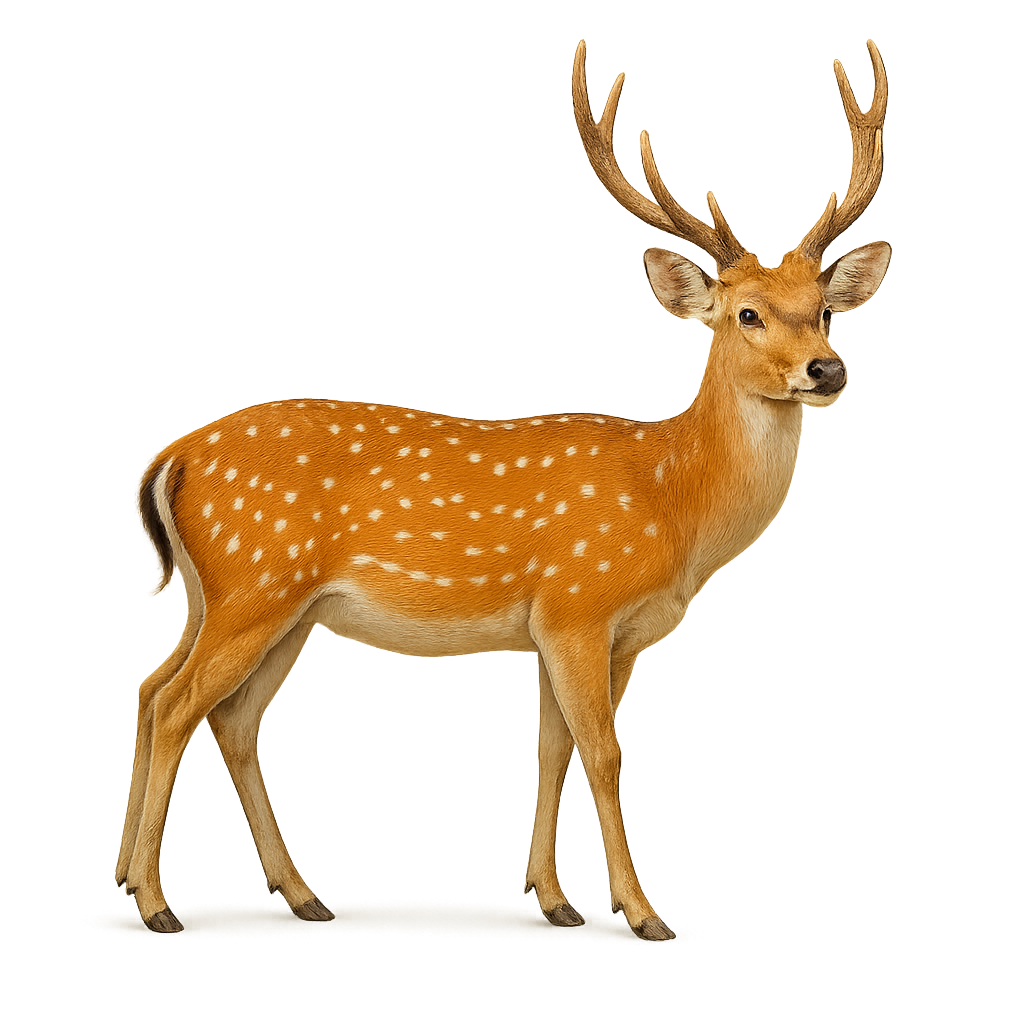Your wildlife photography guide.
Explore the sika deer in detail, study its behavior, prepare your shots.
Where to observe and photograph the sika deer in the wild
Learn where and when to spot the sika deer in the wild, how to identify the species based on distinctive features, and what natural environments it inhabits. The WildlifePhotographer app offers tailored photography tips that reflect the sika deer’s behavior, helping you capture better wildlife images. Explore the full species profile for key information including description, habitat, active periods, and approach techniques.
Sika deer
Scientific name: Cervus nippon

IUCN Status: Least Concern
Family: CERVIDAE
Group: Mammals
Sensitivity to human approach: Suspicious
Minimum approach distance: 20 m
Rut period: September to October
Gestation: 210-220 jours
Births: April to May
Habitat:
Temperate forests, marshes, meadows, and woodlands of East Asia, especially in Japan, China, and Korea
Activity period :
Active at dawn and dusk, ideal moments for observation.
Identification and description:
The Sika Deer is a medium-sized cervid, native to East Asia, that is distinguished by its spotted coat, especially visible in young individuals and females. Its coat ranges from light brown to reddish, often sprinkled with small white spots that help it blend into its forested environment. The Sika Deer has antlers that, although smaller than those of the Red Deer, are well-developed in adult males. It primarily inhabits deciduous and coniferous forests, as well as mountainous areas.
The Sika Deer is an herbivore, feeding mainly on herbaceous plants, young shoots, and leaves. It is a social animal, living in groups, especially during the breeding season. Outside of this period, Sika Deer may be more solitary or live in small family units. While its population remains stable in certain regions, the Sika Deer is sometimes considered an invasive species in other parts of the world, particularly in Europe, where it has been introduced and can compete with local species.
Recommended lens:
200 mm – adjust based on distance, desired framing (portrait or habitat), and approach conditions.
Photography tips:
Use a telephoto lens to photograph the Sika deer in their natural habitat, especially at dusk or early in the morning when they are most active. This deer is often seen in dense forests, making it difficult to spot, so be patient and discreet. Capture them when they move in groups or during the rutting season, for stunning action shots.
The WildlifePhotographer App is coming soon!
Be the first to explore the best nature spots, track rutting seasons, log your observations, and observe more wildlife.
Already 1 432 wildlife lovers subscribed worldwide

